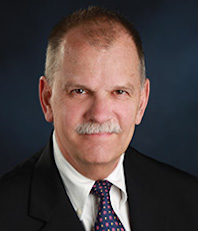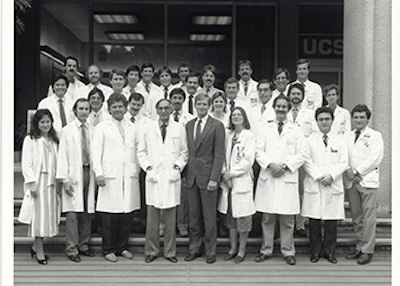David Hoyt Returns to San Diego for ACS Clinical Congress
August 30, 2017 | Lindsay Morgan
The 2017 Clinical Congress of the American College of Surgeons (ACS), one of the largest educational meetings of surgeons in the world, will convene October 22-26 in San Diego, California.
 "This is the premier surgical meeting in the world," says Dr. David Hoyt, the Executive Director of ACS. "This year, we want to emphasize doing the right thing on behalf of our patients. We are emphasizing surgical skills by creating an academy of educators, which will be launched in San Diego, and we also want to celebrate our collaboration with the military. And we want to have a lot of fun."
"This is the premier surgical meeting in the world," says Dr. David Hoyt, the Executive Director of ACS. "This year, we want to emphasize doing the right thing on behalf of our patients. We are emphasizing surgical skills by creating an academy of educators, which will be launched in San Diego, and we also want to celebrate our collaboration with the military. And we want to have a lot of fun."
The ACS is a scientific and educational association of surgeons dedicated to improving the quality of care for the surgical patient by setting high standards for surgical education and practice. This year's program features more than 100 panel sessions; postgraduate courses; "meet the expert" sessions; named lectures; video-based education sessions; town hall meetings, a scientific forum; and e-poster presentations. More than 200 companies will also be on site displaying products and services intended to improve the quality of surgical care or enhance surgical management practices.
Dr. Hoyt served at UCSD for 30 years, including 20 years as the head of the Trauma Center. He was a surgical resident and research fellow (with Scripps Immunology Institute), and subsequently joined the faculty at UCSD, and directed the Trauma Center for 20 years. In 1996, he was appointed professor of surgery and awarded The Monroe E. Trout Professorship in Surgery.
Although Hoyt came from a family of physicians, he wasn't sure he wanted to follow in their footsteps. He made a pit stop in college—studying creative writing and film—before deciding to go to medical school.
 He ultimately ended up at UCSD for his general surgery residency. "I looked at every major academic university at the time," he says, "and went to UCSD and met a young chairman, Dr. Marshall Orloff, who was developing a new department. And I saw a medical school with a vision of focusing on basic research." He decided to join the program.
He ultimately ended up at UCSD for his general surgery residency. "I looked at every major academic university at the time," he says, "and went to UCSD and met a young chairman, Dr. Marshall Orloff, who was developing a new department. And I saw a medical school with a vision of focusing on basic research." He decided to join the program.
In 1984, Hoyt, along with Dr. Steve Shackford and other San Diego County officials, started the San Diego Trauma System, which remains one of Hoyt's most significant legacies—not only in San Diego but around the world.
"We had a vision that should care for patients who are injured as if they had any other disease, which was not the prevalent thought at the time. Injury wasn't treated as equitably as other diseases."
The San Diego Trauma System has been recognized as one of the strongest, most effective trauma systems in the country. In fact, a person who has sustained a life-threatening injury in San Diego County stands twice the chance of surviving than if the injury had occurred in nearly any other part of the U.S.
Hoyt attributes this to: "the commitment of the faculty and residents and the chair. Beyond that, it's working with emergency room and critical care, with EMS and the police department and fire department and government. It can become politically charged in some communities, but we were able to thread that needle. And we became a model for the country."
Dr. Hoyt still speaks glowingly about this time at UCSD: "UCSD was a young place when I joined, and because of that, it wasn't resting on its laurels. It allowed young people to feel like we could make an impact. And this was supported by excellent basic science. This continues to be the backbone that has allowed UCSD to accelerate quickly and progressively: the tremendous commitment to cutting edge science, and supporting faculty to develop as academic physicians.
Looking ahead, Hoyt expects the ACS to continue to build systems to improve surgical quality and education, including through the development of standards across surgical subspecialties. "Frankly, the leadership demonstrated by the development of standards for trauma systems has become the basis for a lot of expansion in programs in the acs – creating systems of care; creating sets of standards. So we have used these elemens to build standards for cancer and vascular and bariatric. This is the legacy of things from 40 years ago and it's the future of the ACS."
